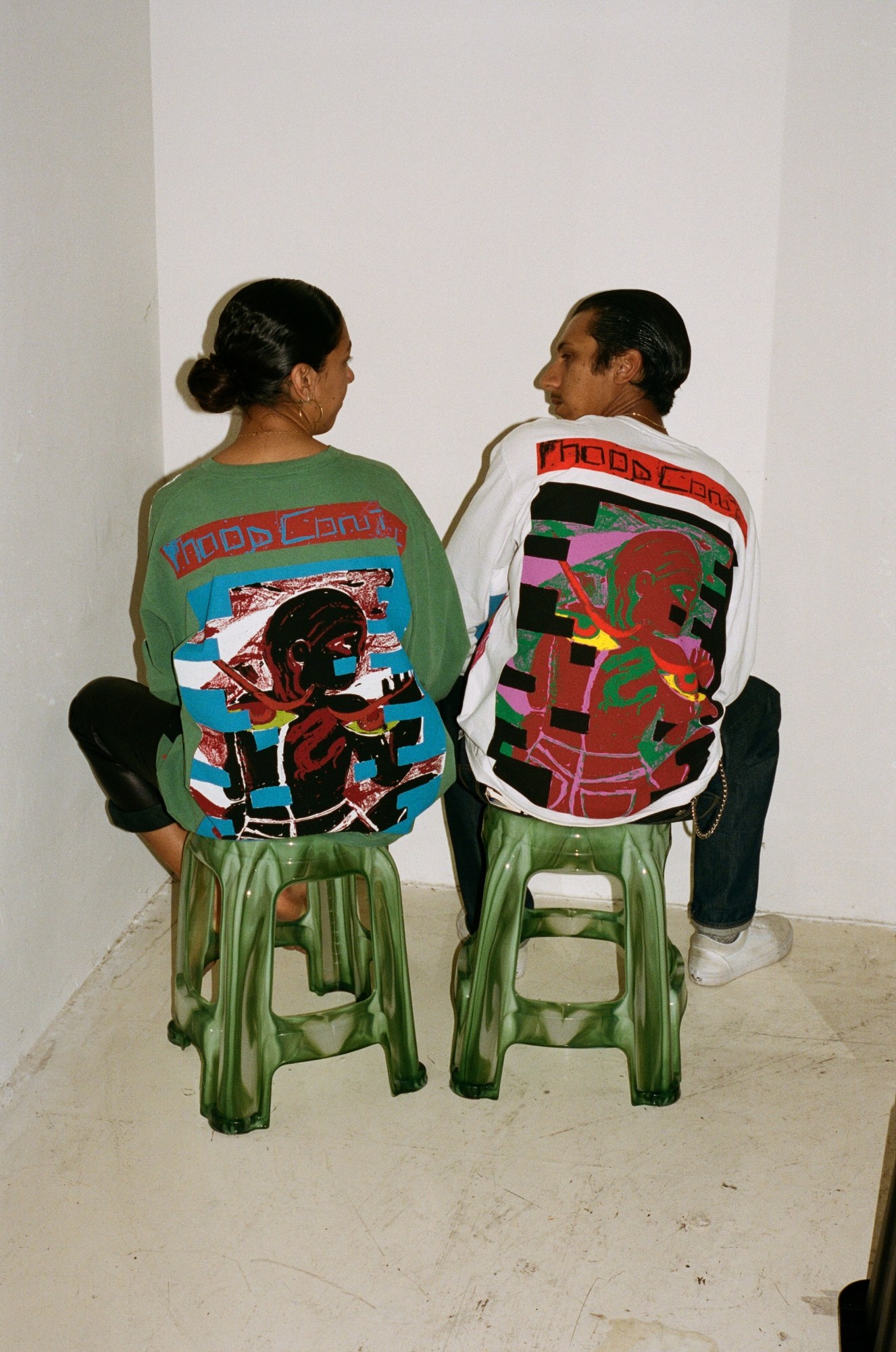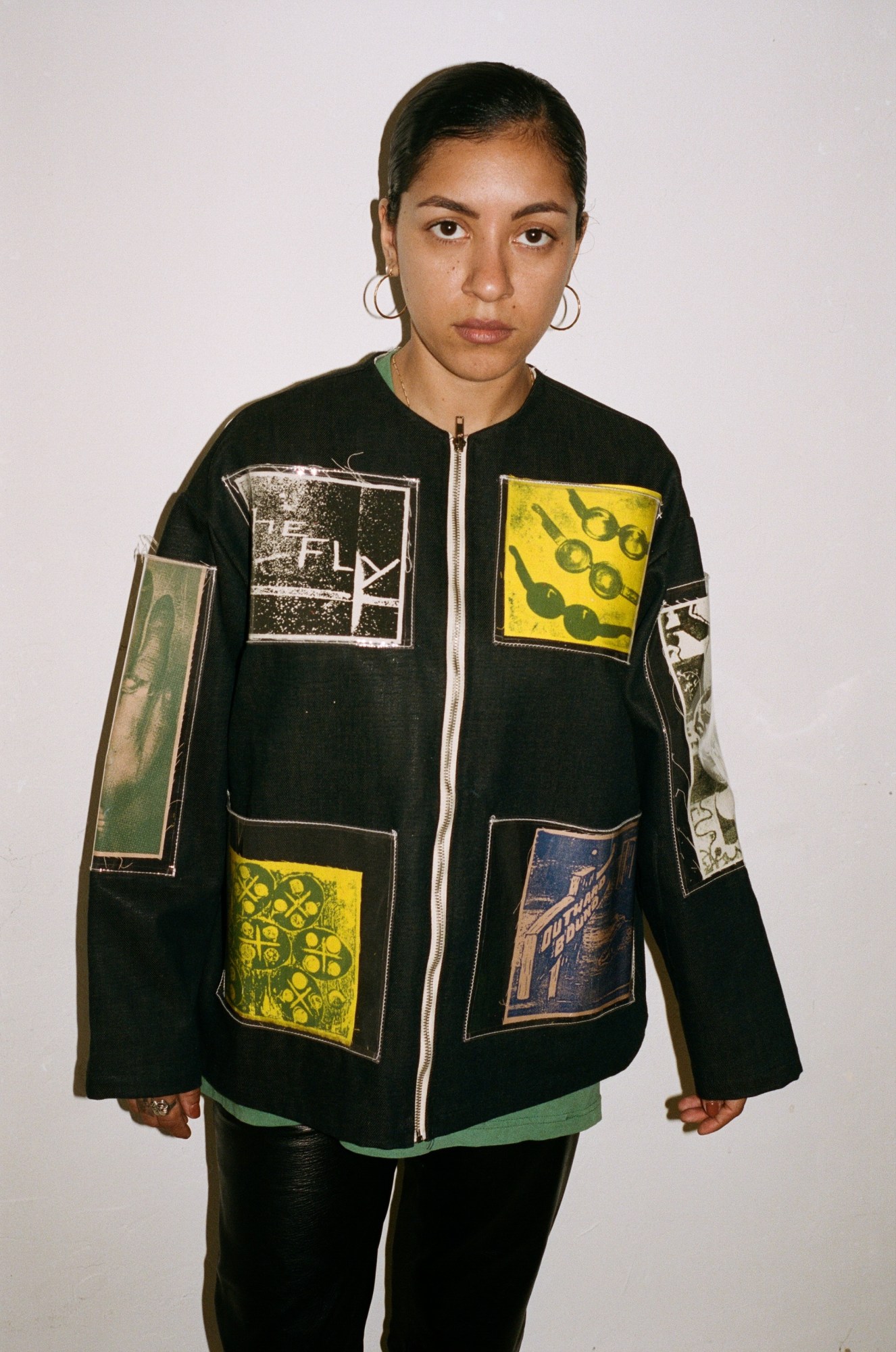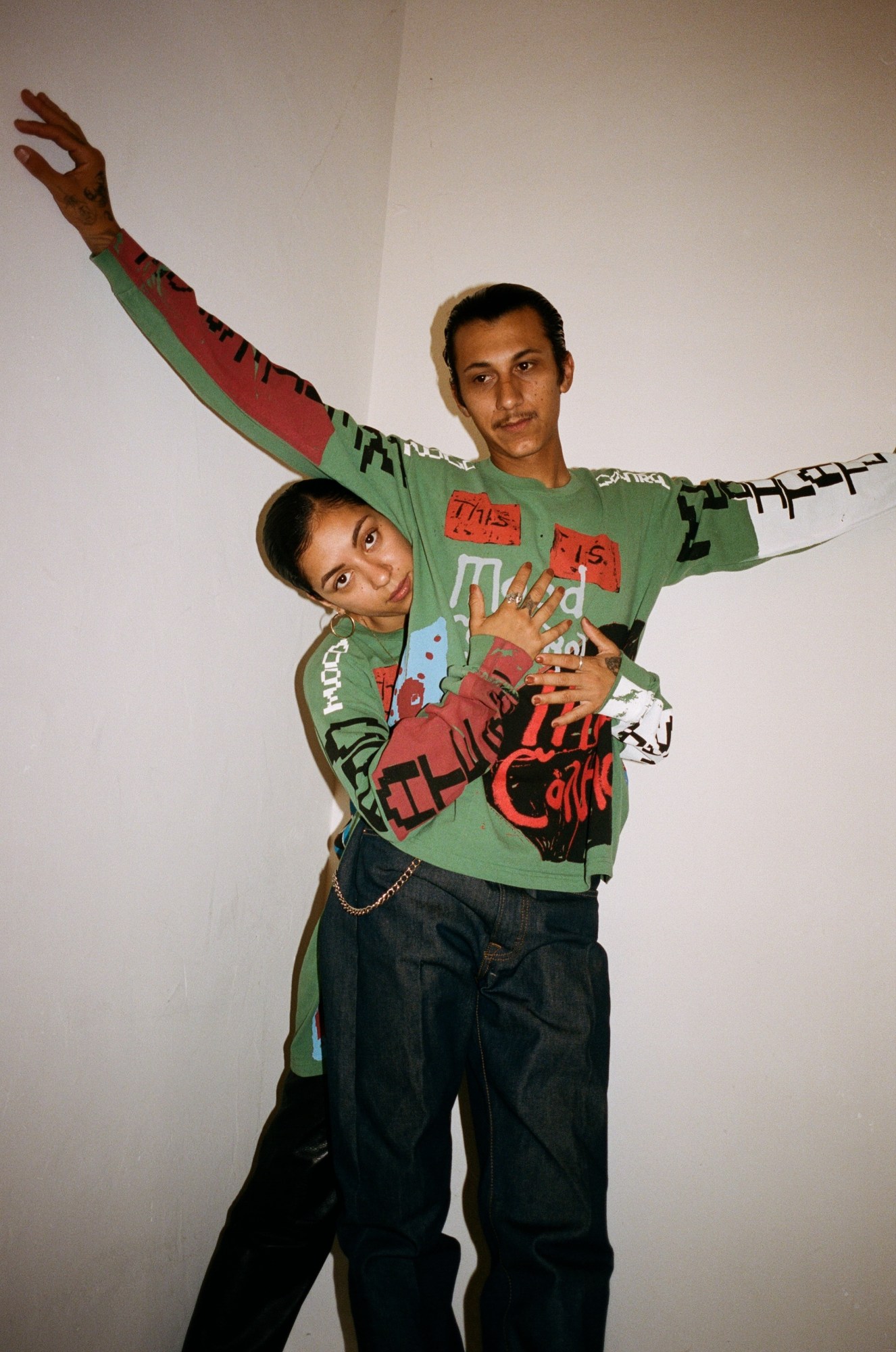Fashion has always had a tendency to pull from underground culture, but recently, it seems nothing is more popular than streetwear. Once the uniform for Tompkins Square skateboarders and downtown cool kids, streetwear is now everywhere. If you scroll through Instagram, you’ll see celebrities from Drake to any given Kardashian wearing something from Supreme or Some Ware. Even Wikipedia is dropping its own streetwear line. But some brands are using politics and a radical DIY spirit to transform the industry. Started by visual artist Sonya Sombreuil in 2009, Come Tees is the punk rock streetwear label making one-of-a-kind pieces with hand-drawn imagery.
“It really came from the fact that I was involved in the music community, and music merchandise was such a presence in my life,” says Sombreuil about the beginning of what would eventually become Come Tees. “So, I started making shirts for bands I knew, and began my own homage project. But when I moved to L.A. in 2014, I really started to engage more with streetwear.”
Since then, the 32-year-old has expanded Come Tees from a range of music merch into a complete line that she hopes will become the next Supreme. That shouldn’t be too difficult considering Rihanna and Kanye are both already fans of the brand. Though that doesn’t matter much to Sombreuil, who’s more interested in pushing the boundaries of her creativity. “I’m always trying to incorporate different aesthetics, different palates, and different worlds,” she said. “I have a million ideas.”
Below, the designer tells i-D about the future of Come Tees and why she calls herself a “purveyor of culture.”

How would you describe your aesthetic?
Honestly, I think a lot of the style points actually have to do with my inabilities. For me, the simplest and most direct way to make something is by drawing it. I’m also just a huge lover of graffiti and prehistoric painting — things that are raw, and hand-drawn.
Who, or what, are some of your influences? The brand has such a punk rock, DIY vibe, but you mix that with a clear hip-hop, streetwear aesthetic.
My influences really are so manifold, but recently, I’ve been connecting to Martine Rose and her work, because I feel like we have that in common — that we both engage in so many different subcultures, that one is kept in check by another. So, there’s a real confluence of different cultural experiences. I mean, I definitely listened to punk, but I don’t feel like my engagement with it outweighs the fact that I grew up on a lot of reggae, for example. More than anything, I find that my biggest interest is people, and therefore culture, and its myriad forms.
Streetwear has become part of such a popular, mass-produced machine within the realm of fast fashion, where nothing is ever totally original. But then here you are, literally hand-drawing on each garment.
Right. But that said, there’s this amazing paradox in the culture where there’s a lot of genericism and branding, but there’s also a lot of different personas, and artists, and players in the field, and that’s what I’m really into — that tension.

I know you said you started out making shirts for bands, but how did that turn into full-fledged fashion line?
It wasn’t so much that I was interested in merch — in fact, I kind of hate merch at this point — I was interested in communication. T-shirts are something that are so easy to disseminate, and so ubiquitous in the world, and I really like the fact that they’re sort of autonomous in their own right. Like, a t-shirt is a t-shirt, not just an accessory or some tool for brand marketing. But as far as becoming an actual brand, I think I had a couple really cool cosmic strikes of fortune, like Rihanna and Kanye purchasing my clothes, and just being in L.A., the degrees of separation between me and the rest of the world became a lot fewer.
What has that been like — seeing people like Kanye and Rihanna in your designs?
It’s delightful, but it’s never changed the project at all. Of course, these things are ways that your business becomes more viable, but I’m still working on the process of both refining and expanding my vision. So, nothing about having someone like Kanye wear my brand has really affected the way I work. I mean, I do love pop culture and am a huge Kanye fan in particular, but I’m equally excited when a friend wears my stuff.
A lot of your designs are overtly political. But aside from some of the more explicit statements, your artwork itself is undeniably radical. Has it been important for you to use your clothes to engage with certain subjects?
I don’t know. Honestly, I think it has more to do with my own process of maturity and my own process of understanding what it means to be a citizen of a culture. In my own personal life, I do a lot of volunteer work, so I do think it’s natural that those ideas would bleed into my work, and on some level, it just feels like [I have] a responsibility to right now. But I think politics have always been at the front of my creative practice, especially as I’ve gotten older.

Are there any particular causes that are especially important for you, or that you find yourself including in your work often?
I have almost a fetish for imagery that has to do with consciousness or awareness. There’s a lot of tropes within that, like mirrors, and doors, and windows, and eyes. I know we’re all really familiar with those tropes, but I also think they have to do with the fundamental experience of perception. That’s what I’m into. I mean, I think if we were all a little bit more aware, there would be world peace.
Does your background as a visual artist affect your process when it comes to designing clothes?
Yes, because I don’t exactly identify myself as a fashion designer, or even someone within the fashion world. More than anything, I see myself as a purveyor of culture. But I think my background has given me this really great vantage point where I experience things, then process them through my own personal practice of drawing. That allows me to be less vulnerable to the pace of fashion and the way it can be kind of flippant.
There are a lot of great brands in L.A. right now that are really expanding the nature of streetwear culture — labels like Come Tees, Born X Raised, Phlemons, and No Sesso. Has living there, and being part of this group of radical designers, influenced your aesthetic?
L.A. has definitely been a huge influence on me personally, just because of the fact that it’s such a compendium of the whole world. Like, if it exists, it has representation in L.A. It’s ironic that the political climate is so dire and yet popular culture is so profound right now. The level of artistry that’s in the mainstream is higher than it’s ever been, at least in my life, and there’s a kind of weirdness and radicalism to the quality that has sort of enabled people to understand these smaller, more subversive voices, as well. I mean, those voices have always been there. I’m a huge, huge fan of No Sesso and Phlemuns, but I see that that frequency in culture that I’ve always loved, and been engaged with, is getting a little bit more of a pass, whereas when I was 13 years old, I was forced underground by the total vapidness of pop culture.

How do you see Come Tees developing further?
I really admire the way Supreme operates. They further their expression through incorporation, and the kind of diversity of objects that they make, and collaborations they do, just expand their universe. Like, I would love to make a Come Tees lighter. I mean, I know this has become like operating procedure for streetwear brands but Supreme did it first. So, ideally, they’re a model of what I would like to do.
It surprises me that you’d look up to a brand like Supreme as a blueprint for Come Tees. I see what you do as something so different, primarily because what you do always has a one-of-a-kind element.
Yeah, I could never could never be Supreme because my brand is so contingent upon my voice and my subjectivity. But I see Supreme as a meta brand. Even their name — they’re branding themselves as the ruler of this realm while giving other designers a platform. When they do a collaboration, it’s never just, ‘Oh here’s a Zippo.’ It’s always their take on it. For me, I’m an artist. I always walk into a room and think, ‘I wish I could design this. I wish I could make a chair, I wish I could make a lamp, I wish I could make a hubcap.’ I have a desire to put my own spin on things, and one good thing about being an artist is I always have more than one idea.
